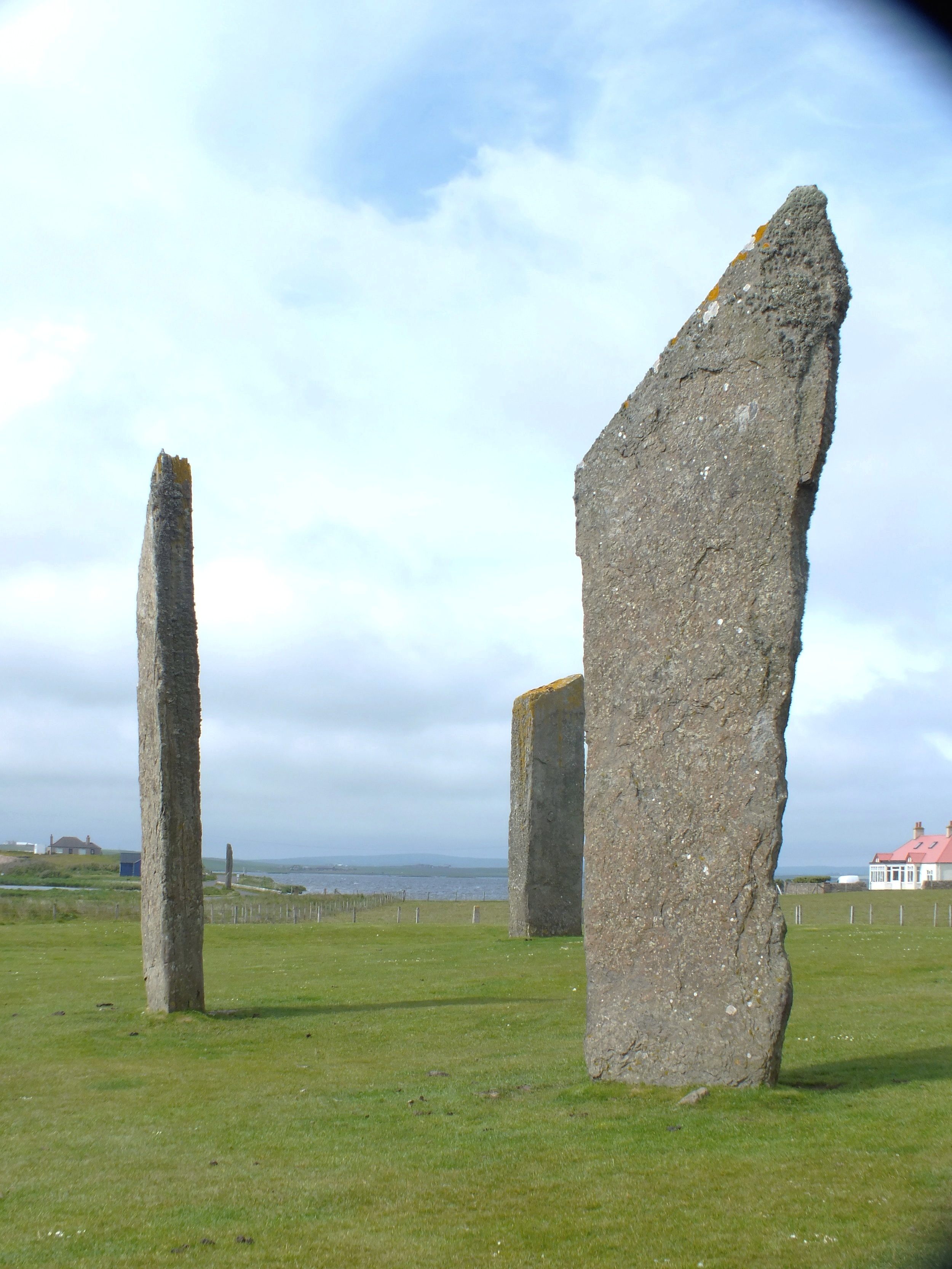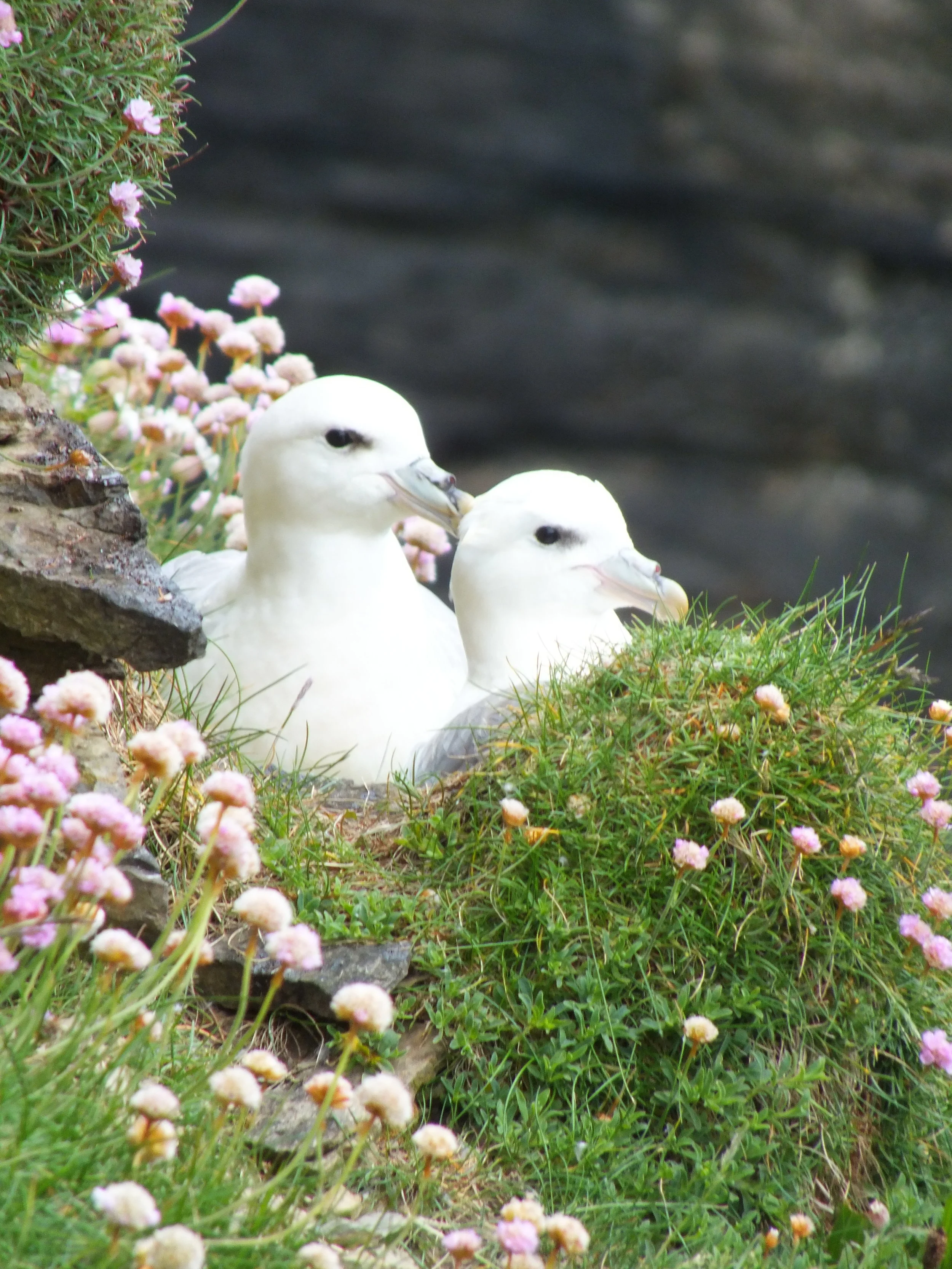Shetland and Orkney Islands: which ones to visit?
Waking up to the early morning light filtering through the porthole, we could make out our first sighting of the Shetland Islands. We were eager to go up on deck to get our first full view of these islands against a backdrop of blue sky and patchy clouds. For us the attraction laid in the relative remoteness of these two island groups stretching out into the North Atlantic waters to the north east coast of mainland Scotland, as well as the wildlife opportunities they offered with a good chance of seeing otters.
Certainly late May / early June proved to be the right time to visit these islands with birds nesting and magnificent displays of wild flowers. Shetland’s profile has been raised both by Lonely Planet naming Shetland as one of its 2019 Top 10 European destinations, and the BBC television detective series, Shetland. The popularity of the Orkneys has been reflected in the increase of visiting cruise ships now making it the most popular stop in the UK.
Whilst there we overheard a caricature that Shetland is comprised of fishermen with crofts, while the Orkneys are farmers with boats. No doubt there is a degree of stereotyping involved but one can see how this implied contrast arises. At the same time, it’s amusing that the main island of each archipelago is called Mainland.
Cliff tops at Eshaness, Northmavine, Shetland
Shetland has extensive tracts of moorland and heather, with crofts located in gentler sloping areas that provide fields for hay cultivation, usually located nearer to the coast. The distinct Shetland sheep are hardy and adaptable to the harsh grazing and climate on the islands and come in different colours and patterns each having their own traditional names. It boasts a rugged, dramatic coastline hosting wonderful birdlife, but with a more limited number of historical sites to visit, even with its Viking heritage.
Grassy farmlands of West Mainland, Orkney
On the other hand, the Orkneys are generally lower lying, but with some sea cliffs and numerous sandy beaches, which unfairly failed to get any nomination in the recent Sunday Times Top 50 UK beaches. It is noticeably greener with much of the land given over to larger scale pastoral farming, with cattle appearing to be more important. The exception to this is the wilder, higher hills and moorland in the north of Hoy. The Mainland of Orkneys is more renowned for the presence of a number of highly important historical sites, termed the Heart of Neolithic Orkney, that was declared a UNESCO World Heritage site in 1999.
We found Shetland to be rather under commercialised and understated. Places were not always obvious or well signposted such as the existence and opening times of a small tea room at the Old Haa Museum, Burravoe on Yell. Generally, facilities can be limited, so it pays to keep alert in these parts. On Yell there seemed to be no significant accommodation, reflecting perhaps that visitors tend to pass quickly through it, perhaps a little unfairly, on the way to Unst.
Standing Stones of Stenness, Mainland, Orkney
We expected the Orkneys to be more commercialised, and were told that there is a much more conscious effort to flag-up and boost the visitor experience with more tea shops and craft & gift shops. To us, it did not seem to be excessively so, especially once one takes into account the more numerous historical sites that Orkney offers. There was still some understating going on, especially on the outer islands. On occasions we found that the signposting at road junctions belied the strategic significance of the location. Apart from a Historic Scotland mobile information trailer, there were no other visitor facilities at the iconic Ring of Brodgar… and pleasantly so as the full natural openness of the site could be fully appreciated. The smaller site of the Standing Stones of Stenness was also underplayed apart from an information board. It was only at the wonderful Skara Brae that a full set of facilities for visitors was found, which had been built and provided in a sensitive way.
Certainly, there was a busier feel to the archipelago’s Mainland, due to the continual wave of cruise ship tours and its relative proximity and therefore easier access from the Scottish mainland. Over 140 cruise ships are expected in 2019, an increase of around 20 on the previous year. We certainly sensed something of a mixed attitude towards this growth and how it is changing the feel of the islands. We learnt that on some days several thousand visitors descend from the gangways leaving the island struggling to respond and it felt a bit incongruous seeing metropolitan bendy buses taking visitors into and back from Kirkwall.
However, it is possible to avoid these parties by taking trips to the smaller islands to the north or south. Despite being quieter, facilities are much more limited. On Eday, there was no café, except a ‘make your own cuppa’ area in the island’s only community store and post office. On Stronsay, the Fish Mart Café has recently closed down, leaving the Craftship Enterprise as the only place available for a drink and something to eat. For Hoy, there was the Beneth'ill Café near the passenger ferry terminal at Moaness in the north, and Emily’s Ice Cream Parlour and Tea Room near to the main ferry terminal at Lyness.
While time did not allow us to visit all the main islands in each archipelago, we saw sufficient to conclude that each island had its own character (whether that be the terrain and land use, beaches, population sizes etc.) to make a visit to each worthwhile. Of the six smaller islands that we visited, our own favourites and most enjoyable were as follows:
In Shetland:
Lemon Kidney Vetch at the Keen of Hamar Nature Reserve, Unst
1. Unst (pop. 632) – a varied landscape and boasting the two nature reserves of Hermaness Head (sea cliffs) and the Keen of Hamar (rare wildflowers)
2. Yell (pop. 966) – extensive moorland, but too easily passed through and under-appreciated
3. Fetlar (pop. 61) – good wildlife possibilities and promoted as being ‘the garden of Shetland’
Vat of Kirbister, Stronsay
In Orkneys:
1. Stronsay (pop. 349) – an island of bays, fine beaches, low sea cliffs and prosperous farming
2. Eday (pop. 160) – especially quiet and peaceful, with its ‘centrality’ providing views across to most of the other islands and Mainland
3. Hoy (pop. 419) – contrast between the more wild, hilly north of the island and the grassy farmlands of South Walls to which Hoy is linked by causeway.
[N.B. Although the weather we experienced did not determine our ranking, we acknowledge that we had some of our wettest weather on Fetlar and Hoy which curtailed some of our exploring].
We did not see every island, and of those we did visit there was certainly nothing we saw or experienced to suggest that we had erred in our choices. The island groups are clearly outdoor destinations where one has to accept that the weather will likely to be cool and variable. At times it will just be you against the elements, as you re calculate the number of layers you need as you get blown around. No doubt in winter the islands get truly lashed by the wind and the rains, but in the summer months the long evenings are a delight that allow an extension to the day’s activities.
Whenever and how one chooses to explore these island groups, the rewards are high from the experiences, sites, wildlife, history and arts & crafts that they have to offer. Sadly, for us, we never did get to see our elusive otters!
PRACTICALITIES
Getting there
Whilst it is possible to fly from the UK mainland to both island groups, it tends to be relatively expensive and may involve two flights with changes either in Edinburgh or Glasgow, depending on your starting point. Instead, we travelled on the NorthLink Ferries, which run between Aberdeen and Lerwick (Shetland). Virtually every alternate day it will also call at Kirkwall (Orkney). The current timetable travels in each direction overnight, virtually forcing one to hire a cabin. That said, we found the facilities, food and service to be of a good standard, although we were not travelling at high season when pressures might increase. We split our time between each island group and sailed direct from Aberdeen to Lerwick (12.5 hrs) and then Lerwick back to Kirkwall (5.5 hrs), passing Fair Isle en route. A shorter ferry ride (1.5 hrs) connects Stromness (Orkney) to Scrabster (near Thurso) on the Scottish mainland. There is also a shorter crossing (1 hr) run by Pentland Ferries between Gills Bay (near John O’Groats) and St Margaret’s Hope (south Orkney Mainland). We were fortunate to have relatively calm crossings, but this is not always the case and sailings do get cancelled when conditions are particularly adverse.
Getting around
Once there, it is worthwhile having your own transport. Cars can be hired, but the islands also attract keen cyclists, although the enthusiasm could wane in strong winds and driving rain no doubt. The Mainlands of both island groups have a local bus network, although the timetables need careful study to ensure connections are possible with some routes also only operating on certain days.
MV Bigga, the inter-island ro-ro ferry operating between Yell, Unst and Fetlar, Shetland
The inter-island ferries in both Shetland and Orkneys are generally good and reliable, providing vital links for the various communities. Unsurprisingly, the more remote islands have less frequent services, so again a close study of the timetables are crucial. Also booking in advance is advisable, especially at busier times and high season. While Shetland Ferries allow online bookings to be made, unfortunately Orkney Ferries do not provide this facility, so requiring a phone call instead. Be prepared though that some disruption can occur when boats are taken out of service for repair or due to adverse conditions.










